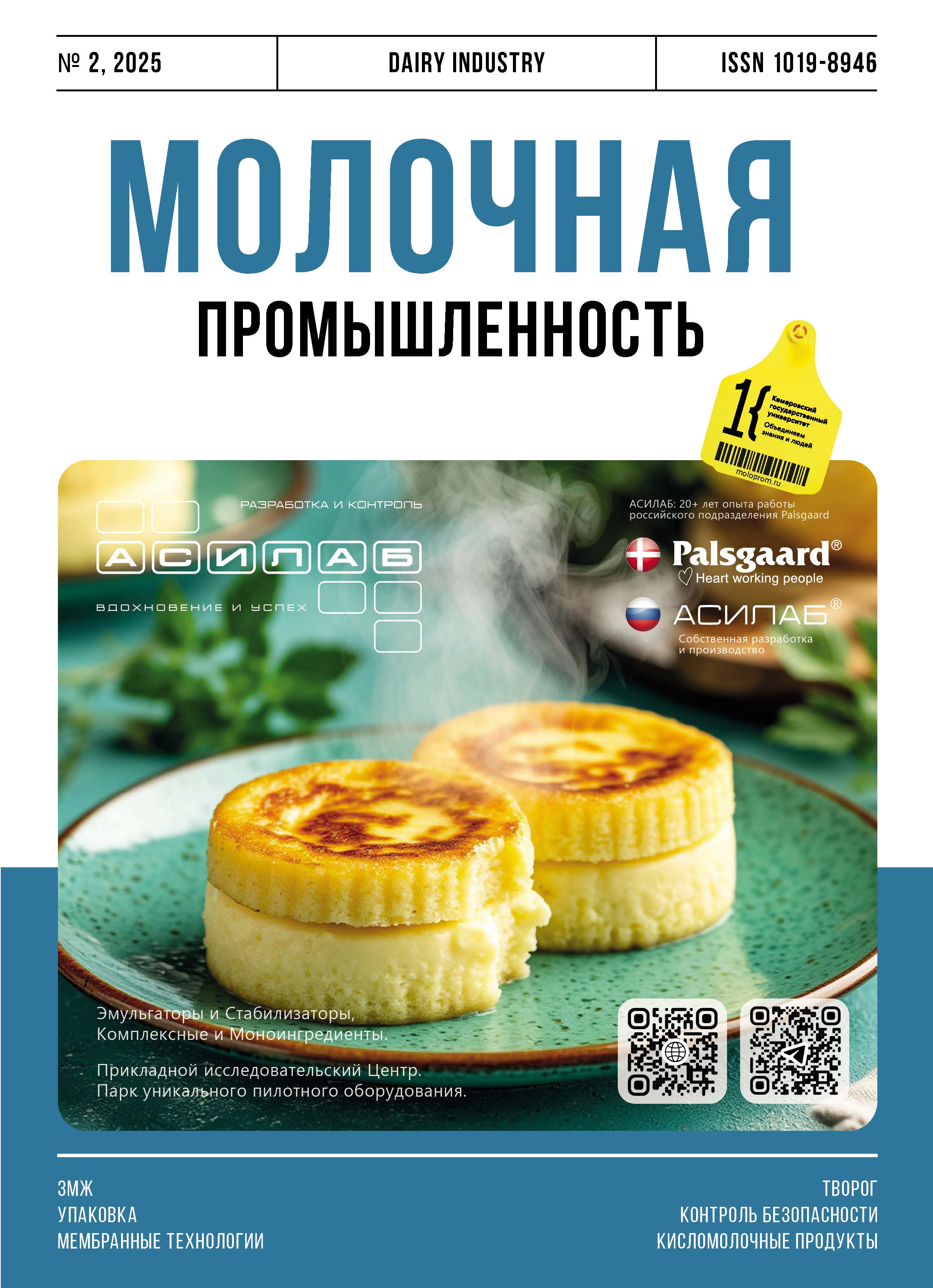Stavropol, Stavropol, Russian Federation
Stavropol, Russian Federation
JSC Stavropolskiy Dairy Plant
Stavropol, Stavropol, Russian Federation
Stavropol, Russian Federation
Stavropol, Russian Federation
The dairy industry consumes a lot of water per unit of final product. Sustainable water consumption needs effective solutions to reduce wastewater. Wastewater treatment and reuse is a promising approach because dairy nanofiltration permeates are easily filtered with reverse osmosis. The article introduces a storage model and microbiological profile for reverse osmosis permeate obtained by nanofiltration. The pilotscale reverse osmosis involved nanofiltration permeate derived from ultrafiltered milk or cheese whey. The microbiological indicators were analyzed immediately after processing and then after 24 and 72 h of room temperature storage. The analysis included a simulation of industrial storage conditions during 7 days with cooling, as well as biofilm samples from container surface. After 24 h, the reverse osmosis permeate demonstrated negligible microflora. After 72 h, the total microbial count increased by two orders of magnitude, i.e., from 4.42 to 6.48 lg(CFU/mL). After 7 days of storage, the analysis of surface swabs from the containers revealed a total microbial count of 2.85 lg(CFU/mL). To prevent microbial contamination, equipment should be washed daily for room-temperature storage or at least once every 7 days for cold storage. The data obtained may help to optimize water use by dairy facilities, but industrial implementation requires a detailed economic assessment of the purification technology, including the costs of equipment, maintenance, resources, cleaning agents, etc.
microbiology, nanofiltration, reverse osmosis, water treatment, biofilms
1. Brião, V. B. Pore blocking mechanism for the recovery of milk solids from dairy wastewater by ultrafiltration / V. B. Brião [et al.] // Brazilian Journal of Chemical Engineering. 2012. Vol. 29(2). P. 393–407. http://doi.org/10.1590/S0104-66322012000200019
2. Andrade L. H. Nanofiltration as tertiary treatment for the reuse of dairy wastewater treated by membrane bioreactor / L. H. Andrade [et al.] // Separation and Purification Technology. 2014. Vol. 126. P. 21–29. https://doi.org/10.1016/j.seppur.2014.01.056
3. Gavrish, A. V. Obratnoosmoticheskaya ochistka permeatov, poluchennyh pri nanofil'tracii molochnogo syr'ya / A. V. Gavrish, G. S. Anisimov, V. A. Kravcov [i dr.] // Molochnaya promyshlennost'. 2023. № 5. S. 16–18. https://doi.org/10.21603/1019-8946-2023-5-2; https://www.elibrary.ru/ndsqmk
4. Al-Obaidi, M. Wastewater Treatment by Reverse Osmosis Process / M. Al-Obaidi [et al.]. – Boca Raton, 2020. – R. 58–63.
5. Vourch, M. Treatment of dairy industry wastewater by reverse osmosis for water reuse / M. Vourch [et al.] // Desalination. 2008. Vol. 219(1-3). P. 190–202. https://doi.org/10.1016/j.desal.2007.05.013; https://www.elibrary.ru/jdzjtw
6. Teh, G. K. Biofilms in the dairy industry / G. K. Teh [et al.]. – Chichester, UK: John Wiley & Sons, Ltd. – 288 p.
7. Ryu, J. H. Attachment and biofilm formation on stainless steel by Escherichia coli O157:H7 as affected by curli production / J. H. Ryu, [et al]. // Letters in applied microbiology. 2004. Vol. 39(4). P. 359–362. https://doi.org/10.1111/j.1472-765X.2004.01591.x







